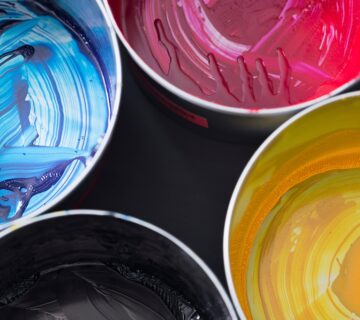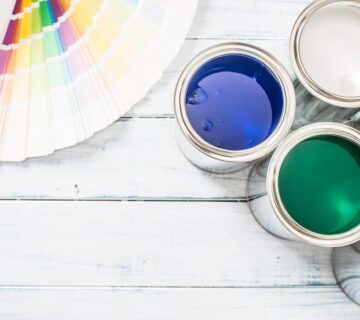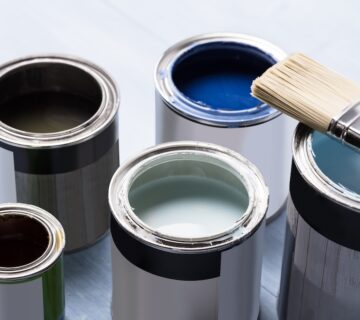Painting your house can indeed be a significant undertaking, requiring careful consideration of both time and financial resources. Whether you’re planning to refresh the interior, exterior, or both, understanding the costs involved is essential for effective project planning and budgeting. The cost of painting a house can vary widely depending on several key factors, including the size of your home, the type of paint selected, labor expenses, and the extent of necessary preparatory work. Additionally, factors such as the condition of the existing paint, any architectural complexities, and environmental considerations can all impact the overall cost of the project. This blog aims to provide a comprehensive overview of the typical expenses associated with painting your house and the various factors that influence these costs, helping you make informed decisions and ensure a successful outcome for your painting project.
Factors Affecting the Cost
Size and Scope of the Project
The primary factor influencing the cost of a painting project is the size and scope of the area to be painted. Whether it’s the number of rooms for an interior project or the square footage of the exterior, painters often charge based on the total area. Generally, larger areas result in higher overall costs due to increased material and labor requirements. Additionally, the layout and design of your home, such as vaulted ceilings or intricate architectural details, can also affect the complexity of the job and, consequently, the final cost. By accurately assessing the size and scope of your project, you can better understand and plan for the associated expenses, ensuring that your budget aligns with your painting goals.
Quality of Paint
The quality and type of paint selected also play a significant role in determining the overall cost of the project. While basic paint options may be more budget-friendly upfront, higher-quality paints with specialized features or finishes often come at a higher price point. Factors such as durability, washability, and resistance to fading or staining can influence the cost of the paint. Additionally, specialty paints, such as those designed for specific surfaces or environmental conditions, may incur additional expenses. When considering paint options, it’s essential to weigh the upfront cost against the long-term benefits, as investing in quality paint can result in a more durable and aesthetically pleasing finish that requires less frequent maintenance and touch-ups.
Prep Work Required
The extent of preparatory work necessary before painting can significantly impact the final cost of the project. This may include tasks such as repairing damages, sanding surfaces, applying primer, or even removing old wallpaper or paint. The condition of the existing surfaces, such as cracks, peeling paint, or water damage, can also affect the amount of prep work required. Additionally, factors such as the accessibility of the painting area and the need for specialized equipment or techniques can influence the labor costs associated with preparation. By thoroughly assessing the condition of your home’s surfaces and identifying any necessary repairs or preparatory tasks upfront, you can better estimate the total cost of the project and avoid unexpected expenses or delays.
Labor Costs
Labor expenses constitute a substantial portion of the total project cost, particularly when hiring professional painters. Labor rates vary based on factors such as geographical location, the complexity of the job, and the experience level of the painters. Some contractors may charge an hourly rate, while others may provide a flat rate based on the project’s overall scope and requirements. Additionally, factors such as the seasonality of the project, local market conditions, and the availability of skilled labor can also influence labor costs. When obtaining quotes from painting contractors, it’s essential to inquire about their labor rates and any additional fees or charges to ensure that you have a clear understanding of the total cost of the project. By investing in experienced and qualified painters, you can ensure a high-quality finish and minimize the risk of costly mistakes or rework.
Additional Costs
Various additional factors can contribute to the total cost of a painting project, beyond the basic materials and labor expenses. For exterior painting projects, factors such as the complexity of the architectural features, such as intricate trim or detailing, may necessitate additional time and resources. Special equipment requirements, such as scaffolding for multi-story buildings or power washing equipment for surface preparation, can also add to the overall expenses. Additionally, changes to the scope of the project, such as altering the paint color or adding decorative finishes, may require additional coats of paint or specialized techniques, resulting in increased material and labor costs. By carefully considering these additional factors and discussing them with your painting contractor upfront, you can ensure that your budget accounts for all potential expenses and avoid surprises during the project.
Estimating Your Costs
Interior Painting
The national average cost for interior painting typically ranges from $2 to $6 per square foot, depending on factors such as paint quality, prep work requirements, and regional labor rates. However, it’s essential to note that these are just averages, and actual costs may vary based on the specific circumstances of your project. To estimate the cost of painting a particular room or area, multiply the square footage by the cost per square foot, factoring in any additional expenses for paint, materials, or labor. For example, painting a standard 10×12 room may cost between $200 and $800, depending on the chosen paint quality and any necessary prep work or repairs.
Exterior Painting
Exterior painting tends to be more expensive than interior painting due to factors such as exposure to the elements, architectural complexities, and the need for specialized equipment or techniques. The average cost for exterior painting can range from $3 to $8 per square foot, depending on factors such as paint quality, surface condition, and regional labor rates. For example, a 2,000 square foot home may cost between $6,000 and $16,000 to paint, depending on the specific requirements of the project. When estimating the cost of exterior painting, be sure to account for any additional expenses for surface preparation, repairs, or specialty coatings, as these can significantly impact the final cost.
Saving on Costs
While professional painting services represent a significant investment, there are several strategies for reducing costs and maximizing value. One option is to perform some preparatory work yourself, such as cleaning surfaces, filling cracks or holes, or removing old paint or wallpaper. By tackling these tasks independently, you can reduce the overall labor costs associated with the project. Additionally, opting for simpler paint finishes or color schemes can help lower material costs and streamline the painting process. If you’re comfortable with DIY projects and have the necessary skills and equipment, you may even consider tackling the painting project yourself to further reduce expenses. However, it’s essential to weigh these potential cost savings against factors such as time investment, quality of workmanship, and the overall complexity of the project. In some cases, investing in professional painting services may ultimately offer greater value and a more polished finish.
Final Thoughts
The cost of painting your house can vary widely based on numerous factors, including the size of the project, the quality of materials, labor expenses, and additional considerations. To ensure an accurate assessment of costs, it’s advisable to obtain quotes from multiple contractors and carefully review the details of each estimate. While cost-effectiveness is important, it’s equally essential to prioritize quality and durability when investing in a paint job, as a well-executed project can enhance the appearance and protect the value of your home for years to come. For more insights into house painting and home improvement, visit our website at sisupainting.com and explore our blog at sisupainting.com/blog.





No comment